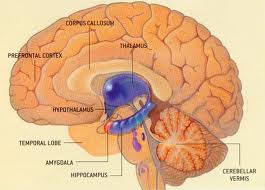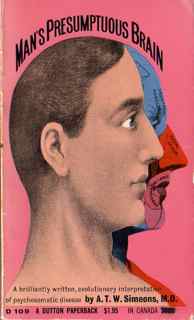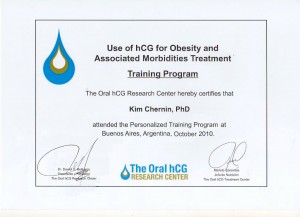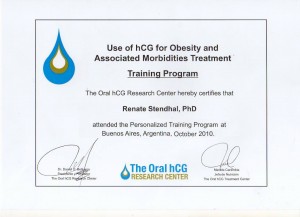THE ABC OF HCG
BY KIM CHERNIN AND RENATE STENDHAL (GAIA OF AIWP*)
ALL THIS MATERIAL IS COVERED BY COPYRIGHT C 2011
*AIWP = Association for the Integration of the Whole Person, a non-profit organization (www.aiwp.org)
What is hcg?
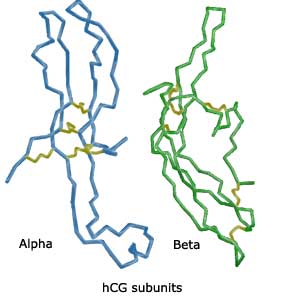 hCG refers to human chorionic gonadotropin, a hormone present in every cell of the body, in both women and men, and abundantly present in the bodies of pregnant women. Christiane Northrup calls it “the hormone of birth.”
hCG refers to human chorionic gonadotropin, a hormone present in every cell of the body, in both women and men, and abundantly present in the bodies of pregnant women. Christiane Northrup calls it “the hormone of birth.”
Dr. Simeons’ book Pounds and Inches: A New Approach To Obesity, first published in 1954, set out new principles of weight loss through the use of hCG to energize the hypothalamus, a primitive part of the brain that acts as a link between endocrine and autonomic nervous system, and regulates the body’s metabolism. 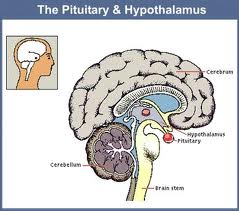 The hypothalamus secretes hormones that stimulate or suppress the release of hormones in the pituitary gland, in addition to controlling water balance, sleep, temperature, appetite, and blood pressure. The hypothalamus may contain a pleasure center, a possibility that could account for the feeling of well-being many experience when taking hCG. When energized by hCG, the hypothalamus promotes the burning of STORED fat that can then be used to nourish someone on a low calorie diet. It can also adjust the way the body is metabolizing the food it takes in.
The hypothalamus secretes hormones that stimulate or suppress the release of hormones in the pituitary gland, in addition to controlling water balance, sleep, temperature, appetite, and blood pressure. The hypothalamus may contain a pleasure center, a possibility that could account for the feeling of well-being many experience when taking hCG. When energized by hCG, the hypothalamus promotes the burning of STORED fat that can then be used to nourish someone on a low calorie diet. It can also adjust the way the body is metabolizing the food it takes in.
This is a point worth repeating: When stored fat is being burned through the energized activity of the hypothalamus, this fat nourishes people on a low-calorie diet so they do not feel hungry. They are being fed by the very fat they are losing. This was one of the crucial hypotheses of Dr. Simeons.
Who Was Dr. Simeons?
Simeons was one of those old-fashioned Samaritan doctors who spend their live helping people while at the same time managing to do research, invent new protocols and think astonishing thoughts. He was born in London but doesn’t seem to have lived there long. He studied medicine at the University of Heidelberg, graduating at the top of his class.

Heidelberg University

His post-graduate study was done in Switzerland and Germany, followed by an appointment to a large surgical hospital near Dresden. When he became interested in the study of tropical diseases he joined the School of Tropical Medicine in Hamburg.

He worked for two years in Africa, driven by a quest for knowledge and a consistent, by now life-long dedication to service.
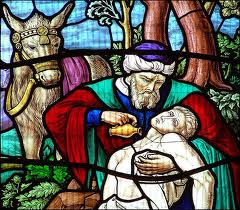
In 1931 he went to India and stayed for eighteen years.

Hadawhar

Tajmahal
 He was deeply interested in the country, its culture and its health problems and here his creativity showed itself dramatically. He discovered the use of injectable atabrin for treating malaria and was awarded a Red Cross Order of Merit. He also evolved a new method of staining malaria parasites, which is now named after him. He was in India during the
He was deeply interested in the country, its culture and its health problems and here his creativity showed itself dramatically. He discovered the use of injectable atabrin for treating malaria and was awarded a Red Cross Order of Merit. He also evolved a new method of staining malaria parasites, which is now named after him. He was in India during the war and held important posts under the Government of India. He carried out research on bubonic plague and leprosy and founded a model leper colony. The colony still exists and has become an all-India treatment center.
war and held important posts under the Government of India. He carried out research on bubonic plague and leprosy and founded a model leper colony. The colony still exists and has become an all-India treatment center.
 After India’s independence he opened up a private practice in Bombay, although he continued to be consulted by the government. In 1949 he moved with his wife and three sons to Rome and began his work on psychosomatic disorders. Dr. Simeons published in numerous scientific journals and wrote several books, including Pounds and Inches and Man’s Presumptous Brain.
After India’s independence he opened up a private practice in Bombay, although he continued to be consulted by the government. In 1949 he moved with his wife and three sons to Rome and began his work on psychosomatic disorders. Dr. Simeons published in numerous scientific journals and wrote several books, including Pounds and Inches and Man’s Presumptous Brain.

Simeons devoted the rest of his life to research and treatment at THE SALVATORI MUNDI INTERNATIONAL HOSPITAL IN ROME.
He spent 40 years there studying obesity and 20 years studying hCG.
When his work is dismissed by researchers who have spent six to eight weeks conducting trials with hCG it is important to keep this background in mind.
What was his work?
Dr. Simeons proposed a fundamentally new theory of obesity. To begin with, he described three kinds of body fat:

Normal Structural fat that fills the gaps between organs. This is essential fat that we can not afford to lose.

Normal fat reserves from which the body can freely draw for energy. This should be left in reserve and not dieted away.
- Persistent, stored fat (hips and thighs and stomach) that is not available to be burned as fuel.
IMPLICATION:
When overweight or obese people attempt to reduce by restricting calories, they will first lose normal fat and then structural fat.
ONLY AFTER THIS DEPLETION OF NECESSARY FAT RESERVES WILL THEY BURN UP THE PERSISTENT STORES OF FAT, the fat they are really trying to lose.
 The existence of a third type of fat was another of Simeons’ discoveries. This idea, linked to the re-invigoration of the
The existence of a third type of fat was another of Simeons’ discoveries. This idea, linked to the re-invigoration of the hypothalamus through the use of hCG, linkage of ideas, theory core, and linked to the burning of stored fat that becomes available to nourish the dieter while she is losing weight, is the crucial core of Simeons’ theory.
hypothalamus through the use of hCG, linkage of ideas, theory core, and linked to the burning of stored fat that becomes available to nourish the dieter while she is losing weight, is the crucial core of Simeons’ theory.
In Simeons’ time it was necessary to inject hCG; since then, thanks to the pioneering work of Dr. Belluscio in Buenos Aires, it is possible to take it orally.
LINEAGE:
There is a short, little known and clearly defined lineage from Dr. Simeons to today.

Dr. Gertrude Vogt trained with Dr. Simeons in Rome, opened the Bellevue Clinic in Zurich, treated 14,000 patients using Simeons’ approach and became in turn a colleague to Dr. Belluscio (below).
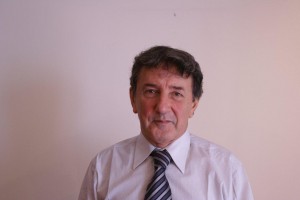
Dr. Belluscio, who has treated well over 6500 patients in his clinic in Buenos Aires. He has studied hCG for the last 29 years and has demonstrated scientifically that oral hCG is effective.
This is the only direct line from Dr. Simeons to the present.
We have been certified by Dr. Belluscio who first developed the oral form of hCG.
Here are our certificates:
 Dr. Belluscio has found that the body does not develop an immunity AFTER 40 DAYS to the oral hCG, as it does to the injectable form. This lengthens the amount of time one can stay on the protocol and shortens the amount of time one needs to take a break between dieting periods.
Dr. Belluscio has found that the body does not develop an immunity AFTER 40 DAYS to the oral hCG, as it does to the injectable form. This lengthens the amount of time one can stay on the protocol and shortens the amount of time one needs to take a break between dieting periods.
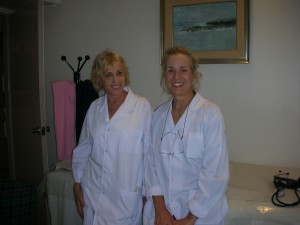
We are proud to be part of this lineage.


